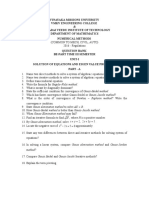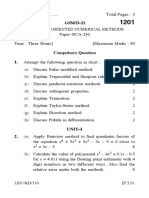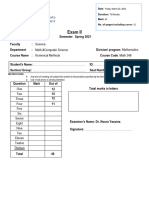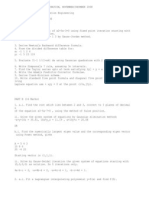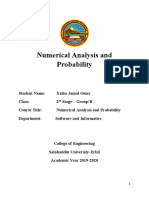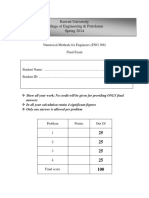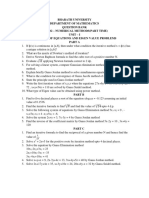0% found this document useful (0 votes)
32 views1 pageCSC2912 Tutorial Sheet 1
This tutorial sheet focuses on numerical analysis, specifically deriving a formula for the second derivative at a point and approximating first and second derivatives using given function values. It includes exercises for calculating derivatives and integrals using various numerical methods such as the trapezoidal rule and Simpson's rule. The document provides specific points of a function and requires approximations for both single and composite methods.
Uploaded by
Robert SimazuoCopyright
© © All Rights Reserved
We take content rights seriously. If you suspect this is your content, claim it here.
Available Formats
Download as PDF, TXT or read online on Scribd
0% found this document useful (0 votes)
32 views1 pageCSC2912 Tutorial Sheet 1
This tutorial sheet focuses on numerical analysis, specifically deriving a formula for the second derivative at a point and approximating first and second derivatives using given function values. It includes exercises for calculating derivatives and integrals using various numerical methods such as the trapezoidal rule and Simpson's rule. The document provides specific points of a function and requires approximations for both single and composite methods.
Uploaded by
Robert SimazuoCopyright
© © All Rights Reserved
We take content rights seriously. If you suspect this is your content, claim it here.
Available Formats
Download as PDF, TXT or read online on Scribd
/ 1














